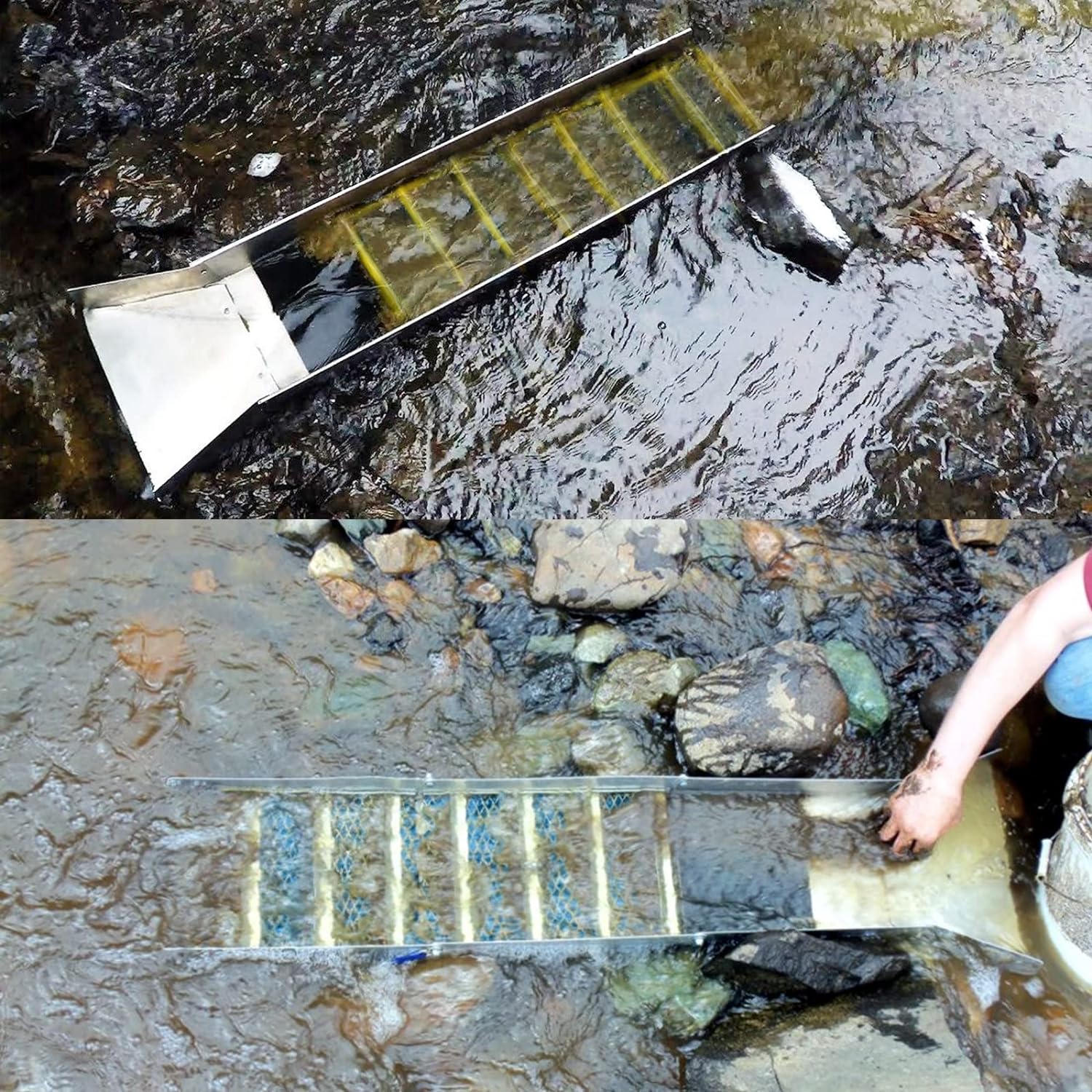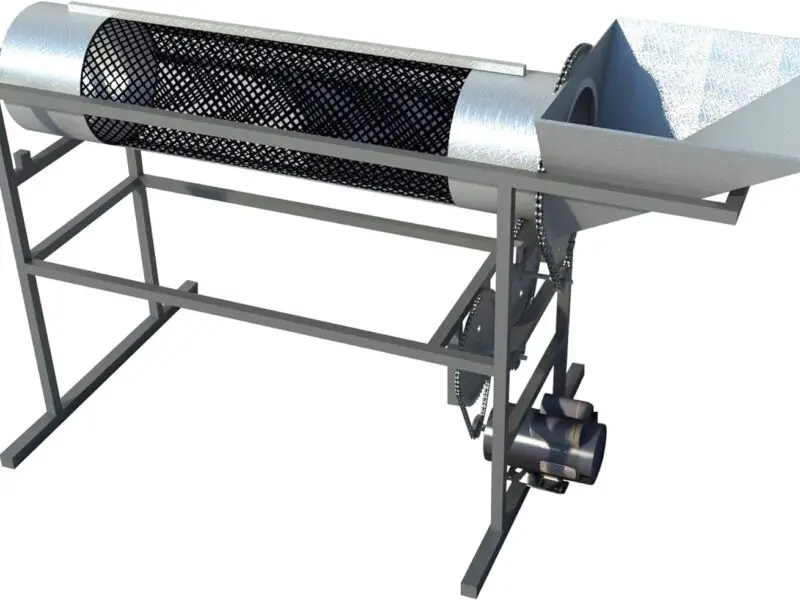Enhancing your sluice box for more gold recovery requires more than just intuition; it demands a strategic approach. This article dives into practical tips and techniques to optimize your sluice box, ensuring that you maximize the amount of gold you recover. From setting it up correctly to handling and classifying materials effectively, we’ve got you covered. We’ll also look at essential maintenance practices and choosing the right matting to improve your gold prospecting results. Ready to boost your chances of finding more gold in your sluice box? Let’s explore these key strategies.
Proper Setup of Your Sluice Box to Get More Gold in Your Sluice Box
Getting your sluice box set up correctly is crucial for maximizing gold retention. The way you set up your sluice box can have a significant impact on how much gold you are able to capture and hold.
The ideal water flow for a sluice box is fast enough to move lighter materials such as small rocks, gravel, and sand, while allowing the gold to settle and hold in the riffles of the sluice. However, it is important to avoid creating whitewater conditions that can cause turbulence within the sluice box. Turbulence can easily blow out the gold from the bottom of the sluice, resulting in loss.
To set up your sluice box properly, start by ensuring that the water flow is at an optimal speed. Once you have achieved the ideal flow, be mindful of not adding material too quickly. Slowly add material to the head of the sluice, paying attention to how it moves through the box. This will help you ensure that the gold is settling and being captured effectively.
Break Up the Heavy Clays
Dealing with clay soils can present a challenge when it comes to gold prospecting. Soils with high clay content tend to hold onto fine gold and prevent it from settling into the riffles of a sluice box. To optimize gold recovery, it is crucial to find a way to break up the clay.
When heavy clods of clay enter the sluice box, they behave like rocks and any gold trapped in them will bounce right through and be lost. Therefore, it is important to bust up and break apart heavy clays to allow for optimal gold recovery. By breaking up the clay, you increase the chances of the gold particles being captured in the riffles.
Classify
Using a classifier to separate larger rocks and organic matter from the gravel can significantly increase your gold recovery. When large rocks tumble through a sluice box, they can disrupt the turbulence of the water and cause gold to be ejected from the riffles. Classifying the gravel before sluicing helps to ensure that only smaller, more manageable pieces enter the sluice box.
While classifying gravel does increase the amount of gold you can yield from a certain amount of gravel, it is important to consider the time and energy it takes. Some prospectors prefer to shovel river gravels directly into the head of the sluice box without classifying. Although this may result in lower yields, processing more gravel may ultimately lead to more gold. It’s worth trying both methods and determining what works best for the specific area you are mining.
Clean Out Your Sluice More Frequently
Regularly cleaning out the concentrates from your sluice box is crucial for maintaining optimal gold capture. The frequency at which you clean out the sluice depends on various factors, but it is generally recommended to do it at least once per day. However, if you notice that the riffles of the sluice box are getting filled up, it may be necessary to clean them out more frequently throughout the day.
Areas with heavy black sands can pack the riffles and prevent gold from being captured. Increasing the flow through your sluice may help, but be cautious not to create excessive turbulence, as this can result in gold loss. Strike a balance between maintaining a clean sluice and ensuring that the water flow is not too turbulent for effective gold capture.
Types of Sluice Matting
The choice of matting material in your sluice box can greatly impact your ability to capture gold. Matting provides a textured surface that helps hold onto gold particles, preventing them from being washed away. There are various types of matting available, each with its own strengths and weaknesses.
Basic carpet can be used in a sluice box, as it provides a sufficient surface for capturing gold. Specialized carpet materials designed specifically for sluices are also available and offer improved gold retention. Additionally, miner’s moss is a popular choice among prospectors for its fine gold retention properties. Experiment with different types of matting to find what works best for the size of gold typically found in your area.
Conclusion
Minimizing gold loss is essential for maximizing your gold recovery while using a sluice box. By focusing on proper setup, breaking up heavy clays, classifying gravel, cleaning out your sluice frequently, and selecting the right matting material, you can significantly increase the amount of gold you find.
Remember, there is no foolproof method that guarantees 100% gold capture, but by following these tips and finding the ideal setup for your specific situation, you can greatly enhance your chances of success. Happy prospecting!
Read more about gold prospecting equipment here





